Those who went to Paris to attend or participate in the Olympics will surely take the opportunity to visit one of the city’s many museums or monuments. But one of the most iconic Parisian destinations is still closed to the public after the terrible fire that hit it in 2019: Notre-Dame de Paris, what used to be the most visited monument in Europe. The state, owner of the monument, declared through the mouth of President of the Republic Emmanuel Macron that it wants to reopen the cathedral in 2024, and the day set by chrono-program will be that of the Immaculate Conception, next December 8. This is a goal on which the’Public Entity for the Restoration of Notre-Dame de Paris’ (Rebâtir Notre-Dame de Paris) created specifically by a law for the extraordinary work of reconstruction and restoration is working hard.
It was April 15, 5 years ago when, at about 7 p.m., a fire broke out on the scaffolding that was there for a restoration, the flames quickly took root attacking the 500 tons of wood in the attic (the wood of 1,300 oaks) destroying the spire, the roofing of the nave and transept, and the roof structure.
Before the fire, France’s cathedral-symbol welcomed 12 million visitors annually, 2,400 church services and 150 concerts a year. The immense effort made to rebuild over five years was able to count on a popular movement of donations from around the world that brought some 846 million euros to the site’s coffers. Such fundraising is unprecedented with 340,000 donors from 150 countries around the world. And unprecedented are the laborers and designers who have been gathered around the construction site, the excellences of France. It should be highlighted that the four companies responsible for the reconstruction of the spire’s framework are usually competitors but chose to join forces and bid as a consortium to take on the double challenge, both technical and timing. They are Le Bras Frères (from the department of Meurthe-et-Moselle), the lead partner, Asselin (Deux-Sèvres), Cruard Charpente (Mayenne) and MdB Métiers du bois (Val-de-Marne). In all, nearly 250 companies and art workshops worked in the cathedral and throughout France, and there were more than 140 tenders to contract services and works.
Once the cathedral reopens to the public, in order to allow for the greatest enjoyment, it has been decided that for the first six months, until Pentecost 2025, access will be restricted to individual visitors and worshippers, with groups only allowed to enter after this period. New accessibility devices, a new signage system, new guides and catalogs will be developed, as well as nearly 500 volunteers to welcome tourists. Reservations will be able to be made through a digital system.
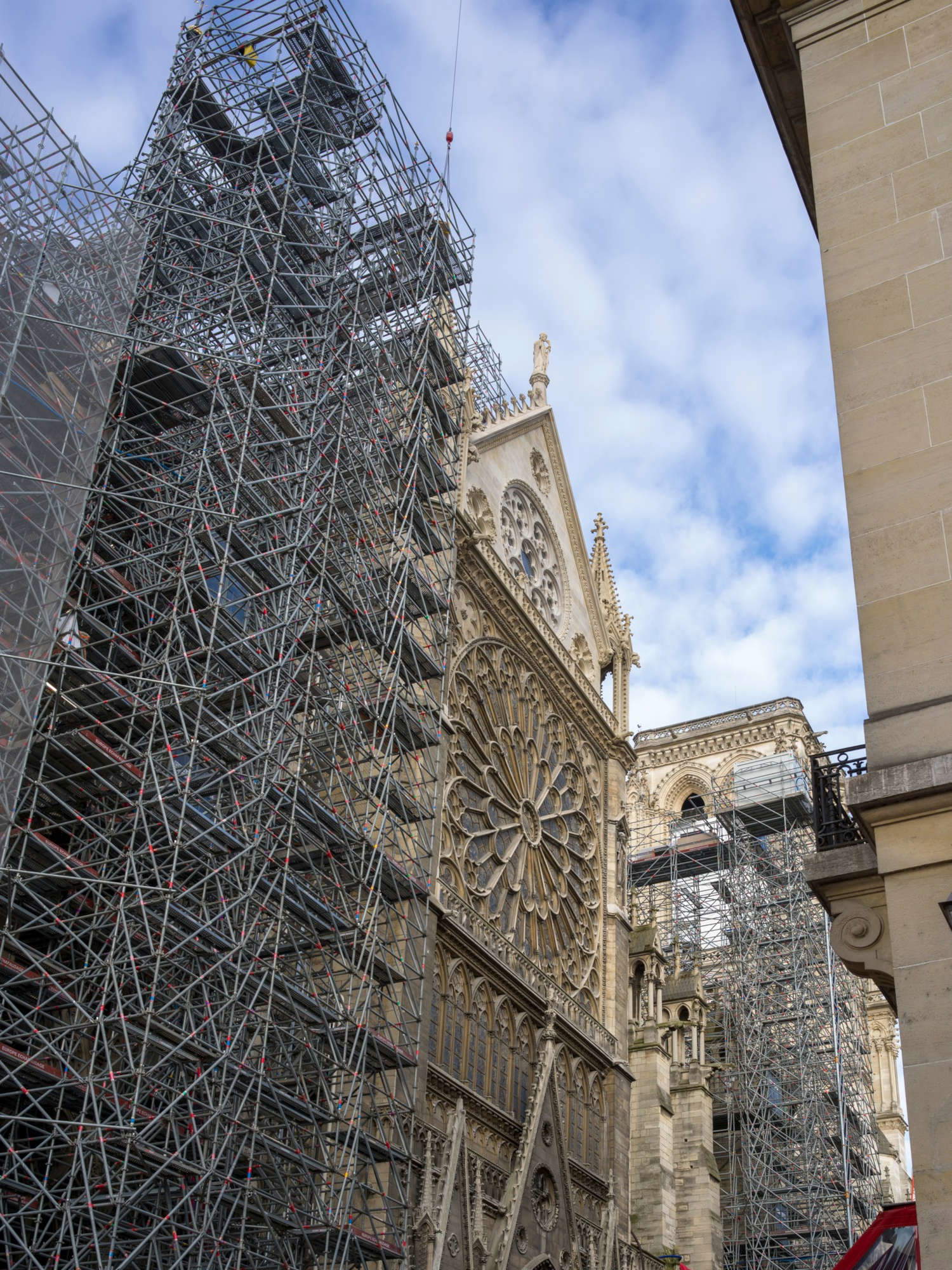
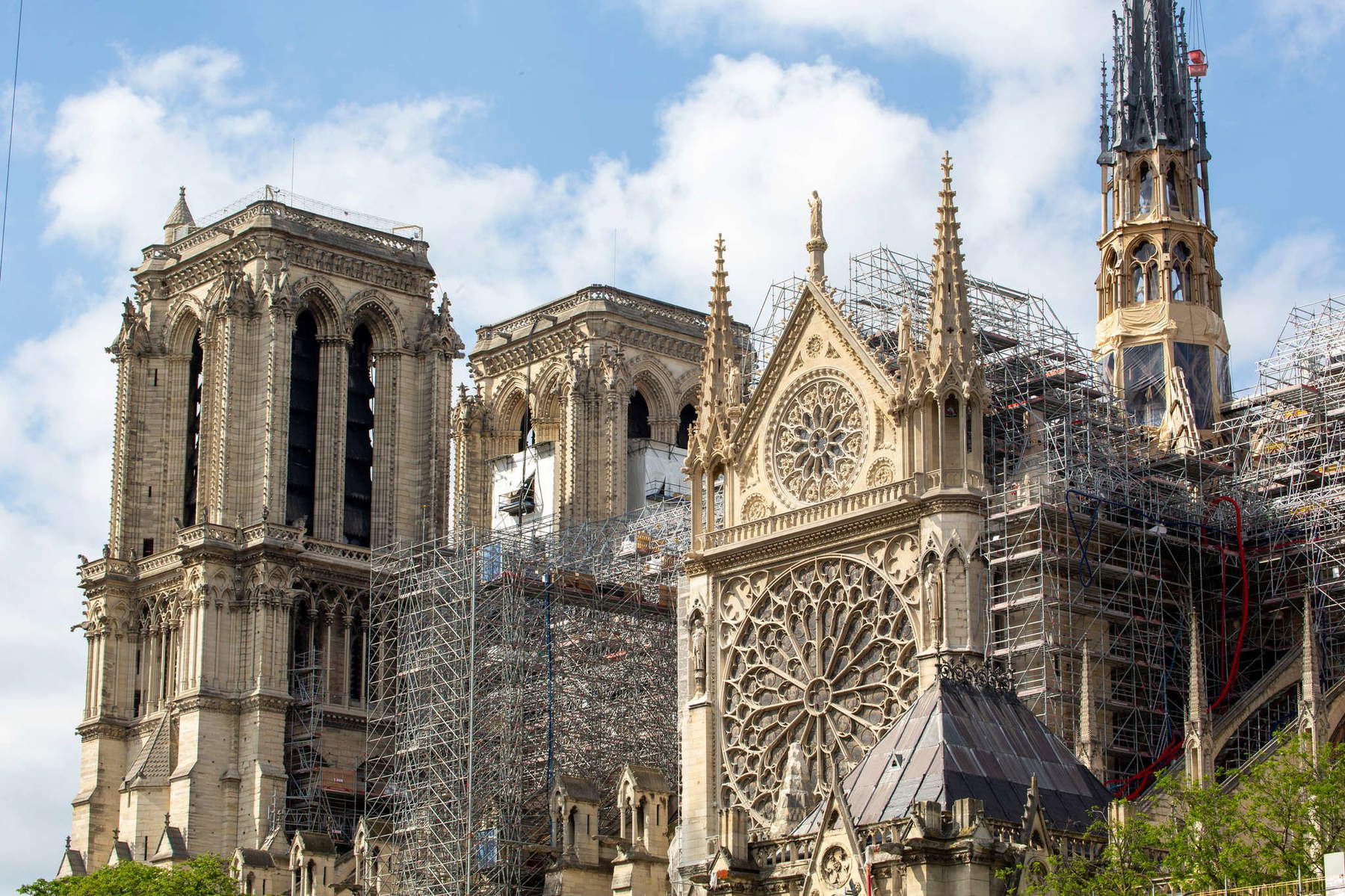
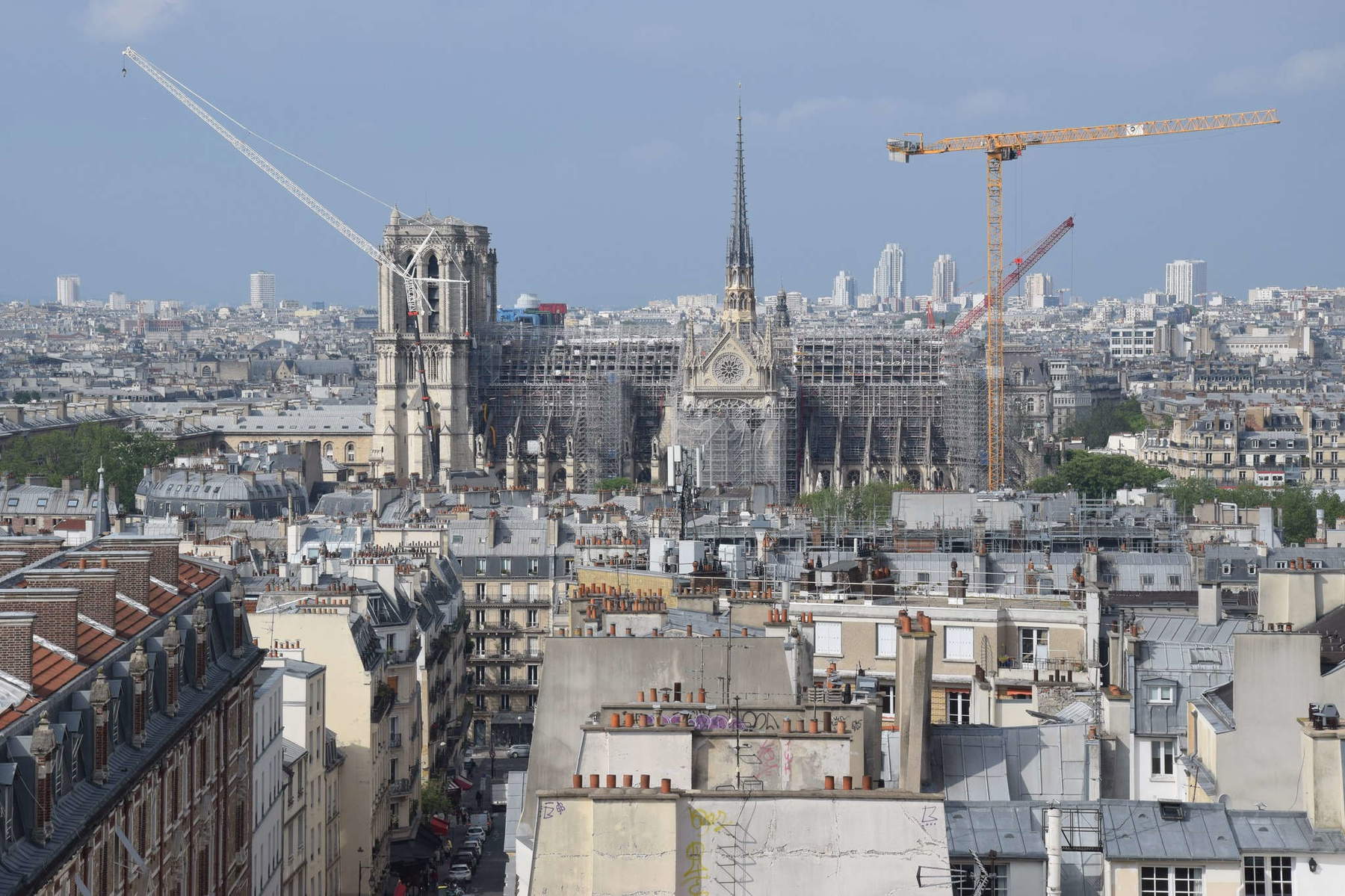
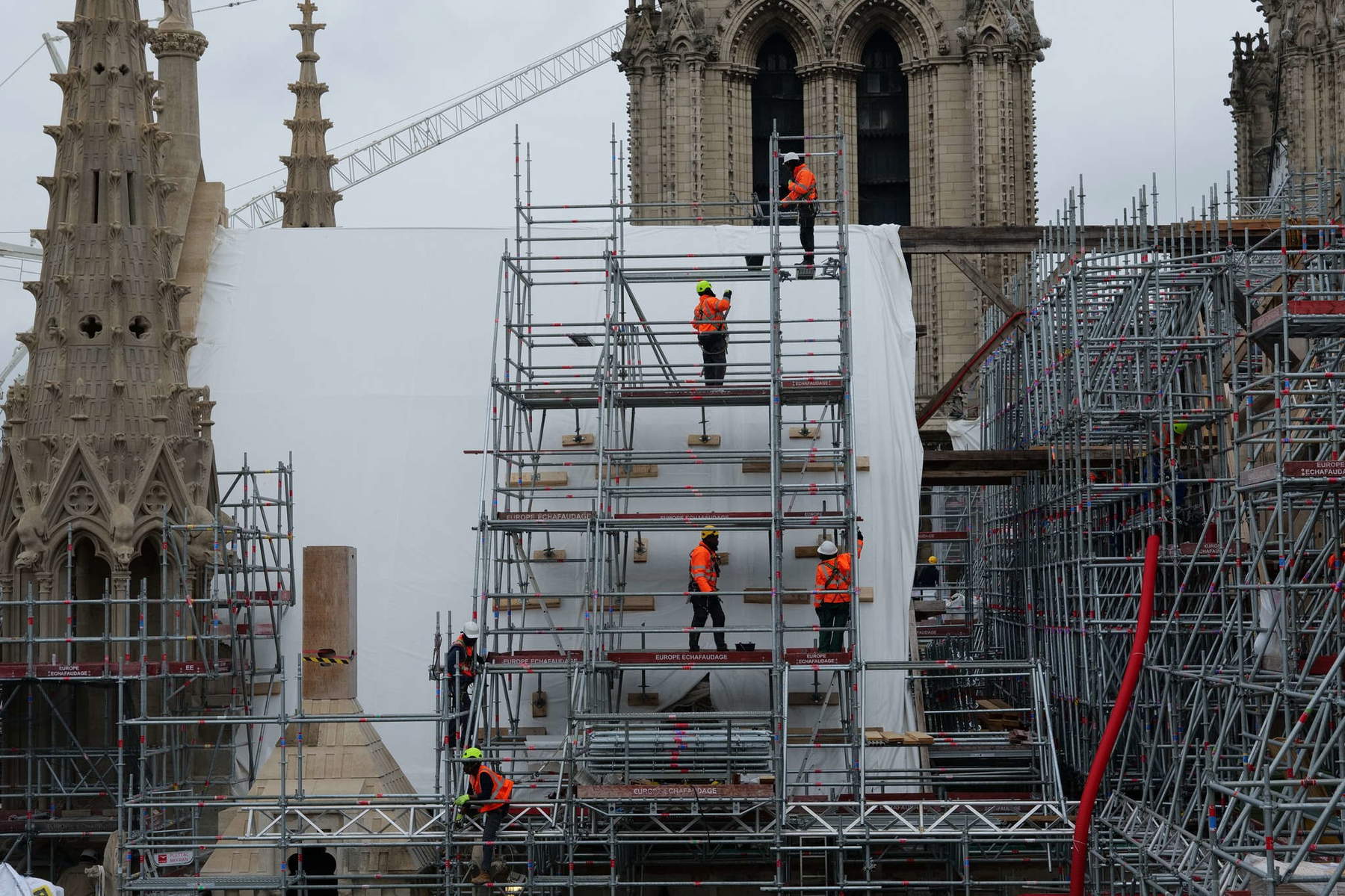
When we are four months away from the scheduled inauguration date, let’s see where we stand starting with the satisfaction with the work done so far of the president of the public institution Rebâtir Notre-Dame de Paris, the project manager of the restoration site, Philippe Jost, in the editorial that opens issue 7 of the semi-annual bulletin with updates on the site, “La Fabrique de Notre-Dame” (July 2024, available in French and English, co-published by the public body Rebâtir Notre-Dame de Paris and Connaissance des Arts 116 pages, €12 purchasable at this link: all proceeds will be donated to the restoration project). “We are proud of the progress made so far,” says Philippe Jost, “with the greatest challenges of the rebirth of the wounded building having been met, in a cathedral that has still regained its vaults and structures, its fundamental spire and its great roofs, its statues and its carved, molded, drawn stone and lead ornaments, its chimeras and its gutters. A cathedral that benefits from completely redesigned technical and fire-fighting equipment and that finally unfolds in its interior space an incomparable splendor and brilliance that we have never seen before. So yes, we are close to the goal. But we still have [...] months of hard work ahead of us, where every day will count. In addition to the roofs, we will finish the interior fittings, hand in hand with the teams from the diocese of Paris and the contractors contracted by it for the work that falls on it, which has been in full swing in recent months: lighting, sound systems, installation of new liturgical furnishings including the high altar at the transept intersection, as well as managing the renewed operation of the cathedral. And we also need to restore the plaza in front of the cathedral, in close cooperation with the city of Paris, to give the public access to the three portals of the great western facade.”
Work is almost complete: the reconstruction will remain faithful to what was designed in the 19th century by architect Eugène Viollet-le-Duc. In the aftermath of the collapse, there was much discussion about how to proceed with the restoration and whether, as President Macron proposed, the building should be remade with innovative grafts from a building and creative point of view, giving it a contemporary touch. Many leading architects spoke of this opportunity to be seized, including Norman Foster who had conjured up an interplay of transparency with an all-glass pinnacle. But Ian Ritchie, the creator of The Spire, which opened in 2003 in Dublin, also publicly made a proposal involving a flèche of thin refracting crystal reflecting the sky. For Paul Godart and Pierre Roussel, the spire could have been gilded with a glass and steel roof. Spire that, let us remember, had been rebuilt at the end of the 19th century after the previous one had been destroyed during the Revolution, with a futuristic design for the time, in sharp contrast to the Gothic style of the cathedral. At the end of the debate, it was decided to bring everything back to the last known image: the Gothic cathedral renovated by Eugène Viollet-le-Duc in 1859, using the same original materials and techniques down to the construction methods used in the Middle Ages.
Everything that had been saved from the fire was cleaned up and restored, including the colossal organ, which with its 8,000 pipes divided into 115 registers was disassembled piece by piece to clean it of all the ash dust and extinguishers. But we will have to wait another year to hear it play properly (in fact, to ’tune’ it, when the re-assembly is completed, they estimate that the rehearsals will take at least six months to get the optimal sound given the delicate harmonization process).
We are in the phase of securing the building. The next steps are the installation of the wooden arches under the ramped arches of the nave on the south side, then the removal of scaffolding placed at the crossing of the transepts. In May, the 12-meter-high 19th-century cross at the top of the cathedral (which had survived the devastating fire) was placed.
In mid-June a new rooster was installed on top of the spire since the original rooster was severely damaged. Designed by architect Phillipe Villeneuve, the sculpture was made of copper and covered in gold, and inside it were placed the relics savedfrom thefire, including a fragment of Christ’s crown of thorns, the bones of Saint-Denis (St. Dionysius), the first bishop of Paris in the 3rd century, the bones of Sainte-Geneviève (Geneviève), patroness of the city of Paris, who died around the year 500. Also placed was a sealed tube with alist of the names of the 2,000 people who are participating in thereconstruction at the “construction site of the century,” as PresidentMacron called it (a wide variety of trades worked here: masons and the stonemasons, who completed, on May 24, 2024, the reconstruction of the transept cross vault, thus restoring the cathedral in all its vaults but still 500 are at work: restorers of paintings and sculptures, they are completing the restoration of the choir chapels and carved elements; carpenters and wood carvers, who are completing the restoration of the choir stalls). The new rooster has wings that look like flames since in the architect’s intentions it was meant to resemble a phoenix that can rise from fire and its ashes.
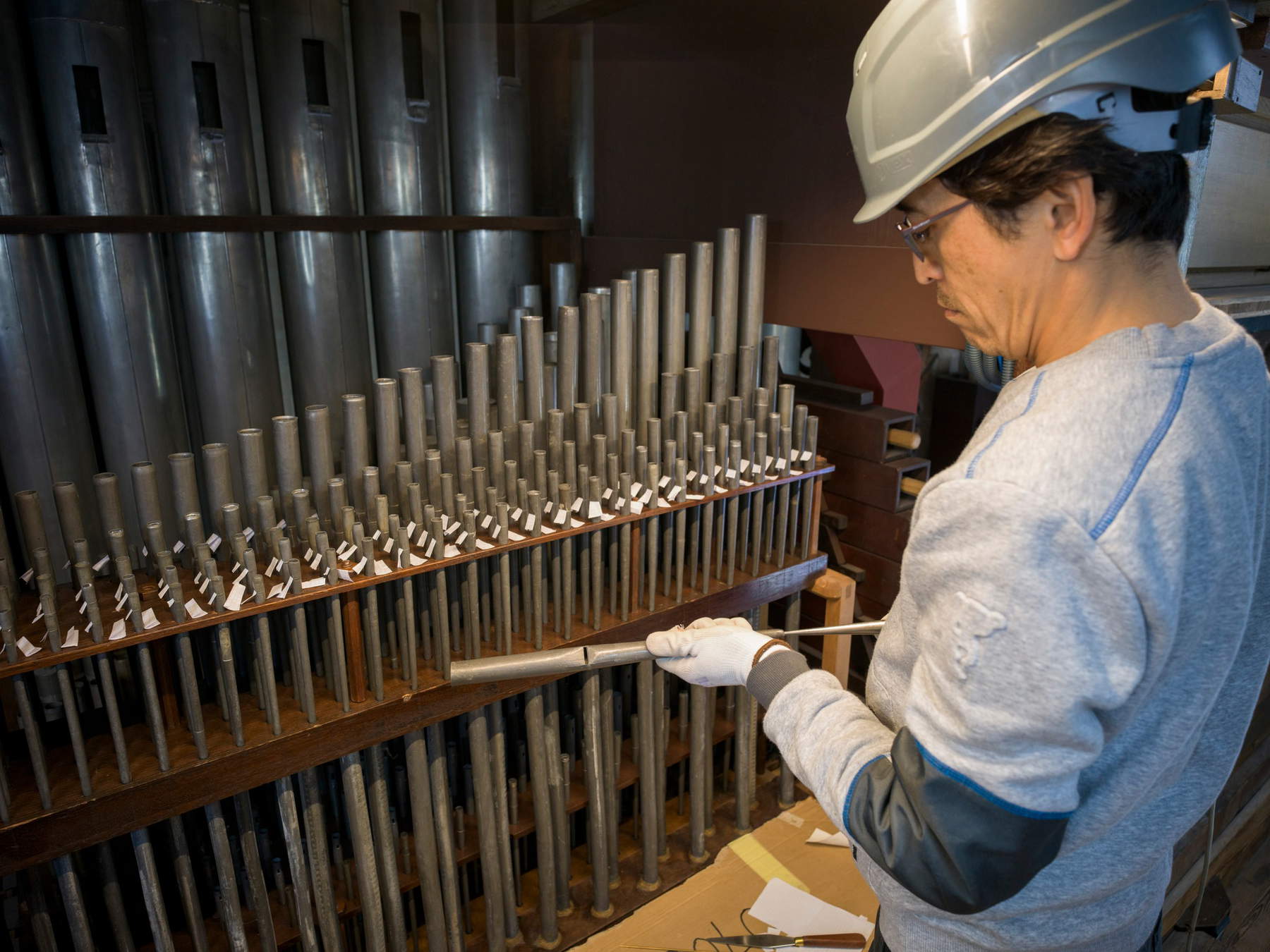

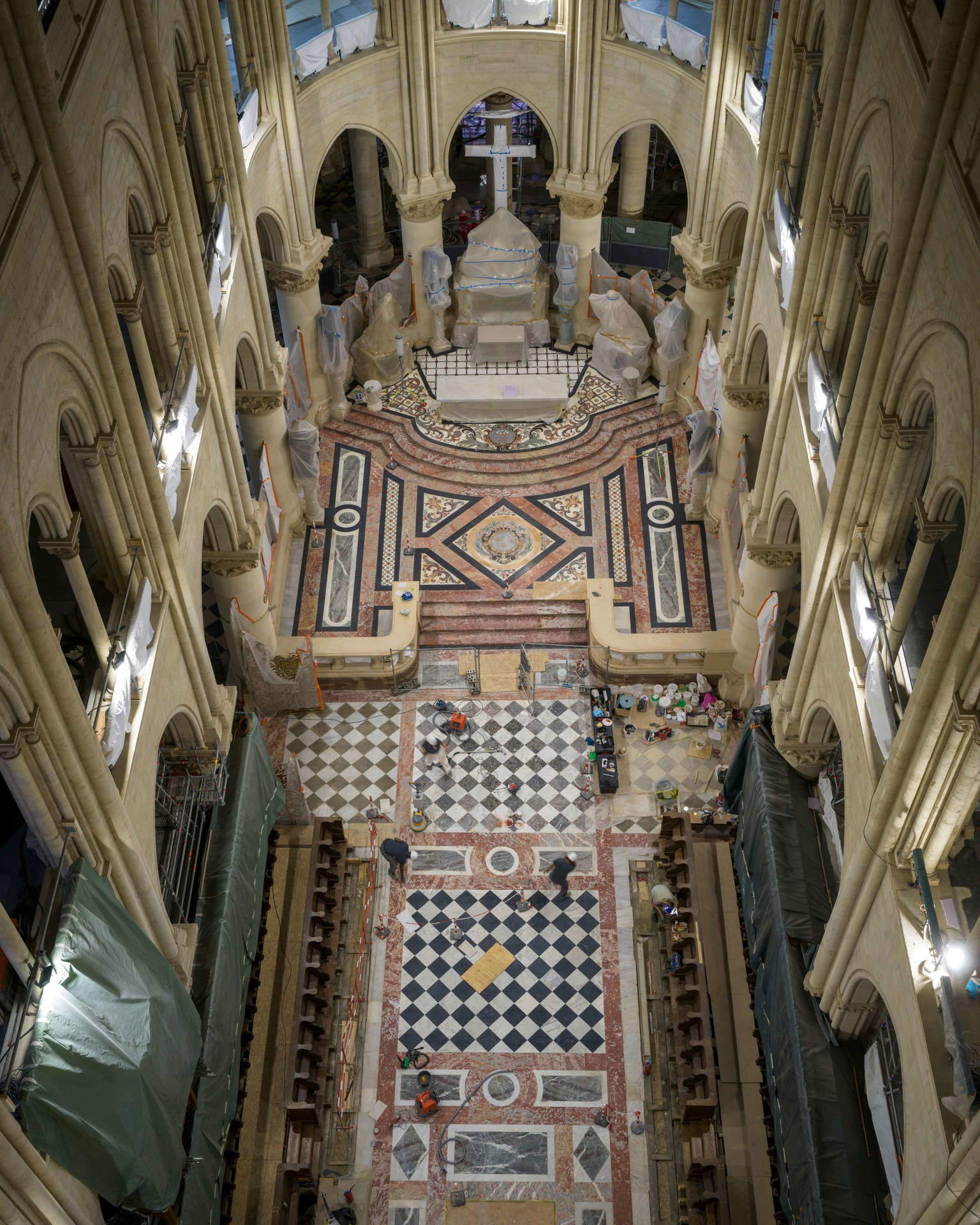
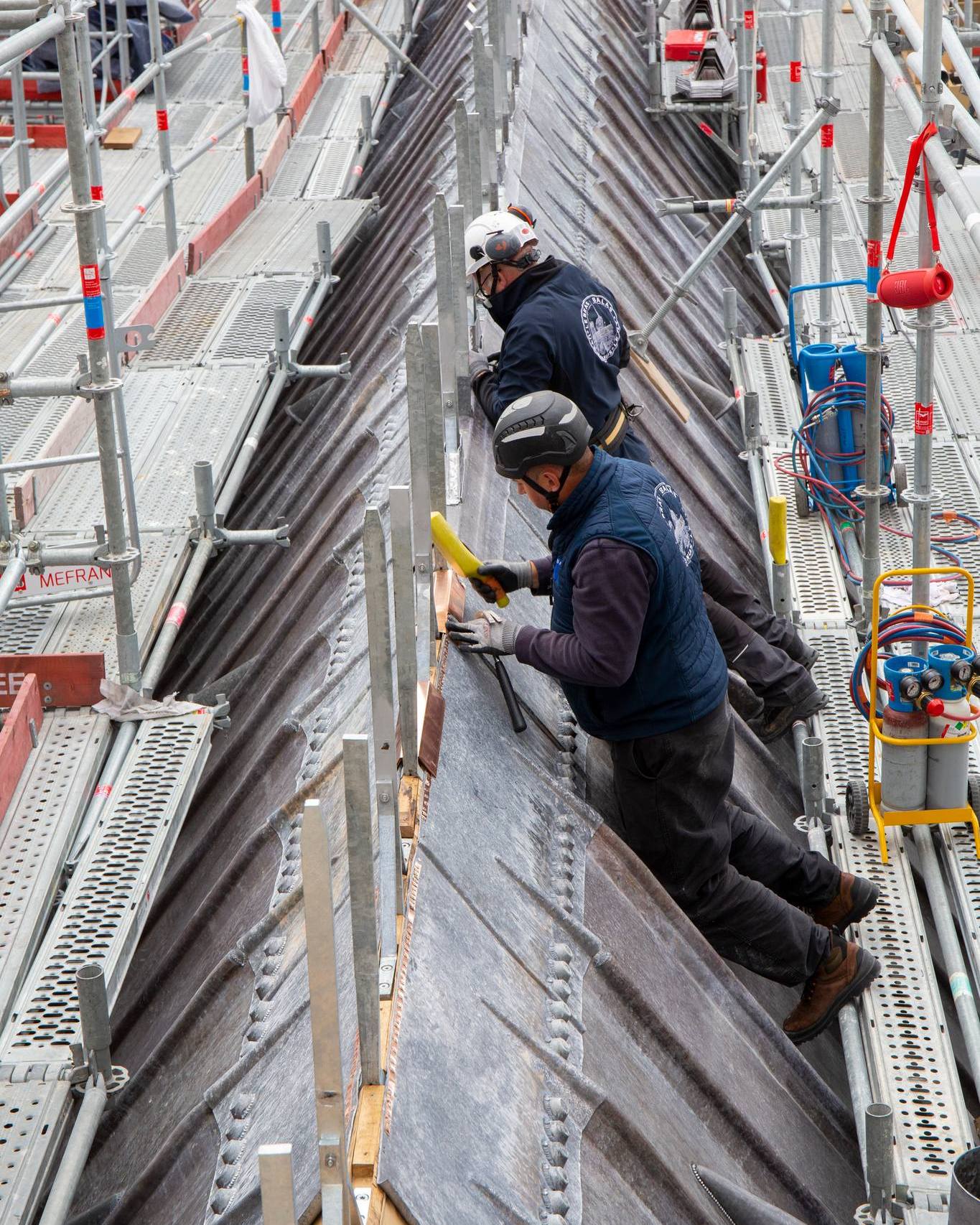
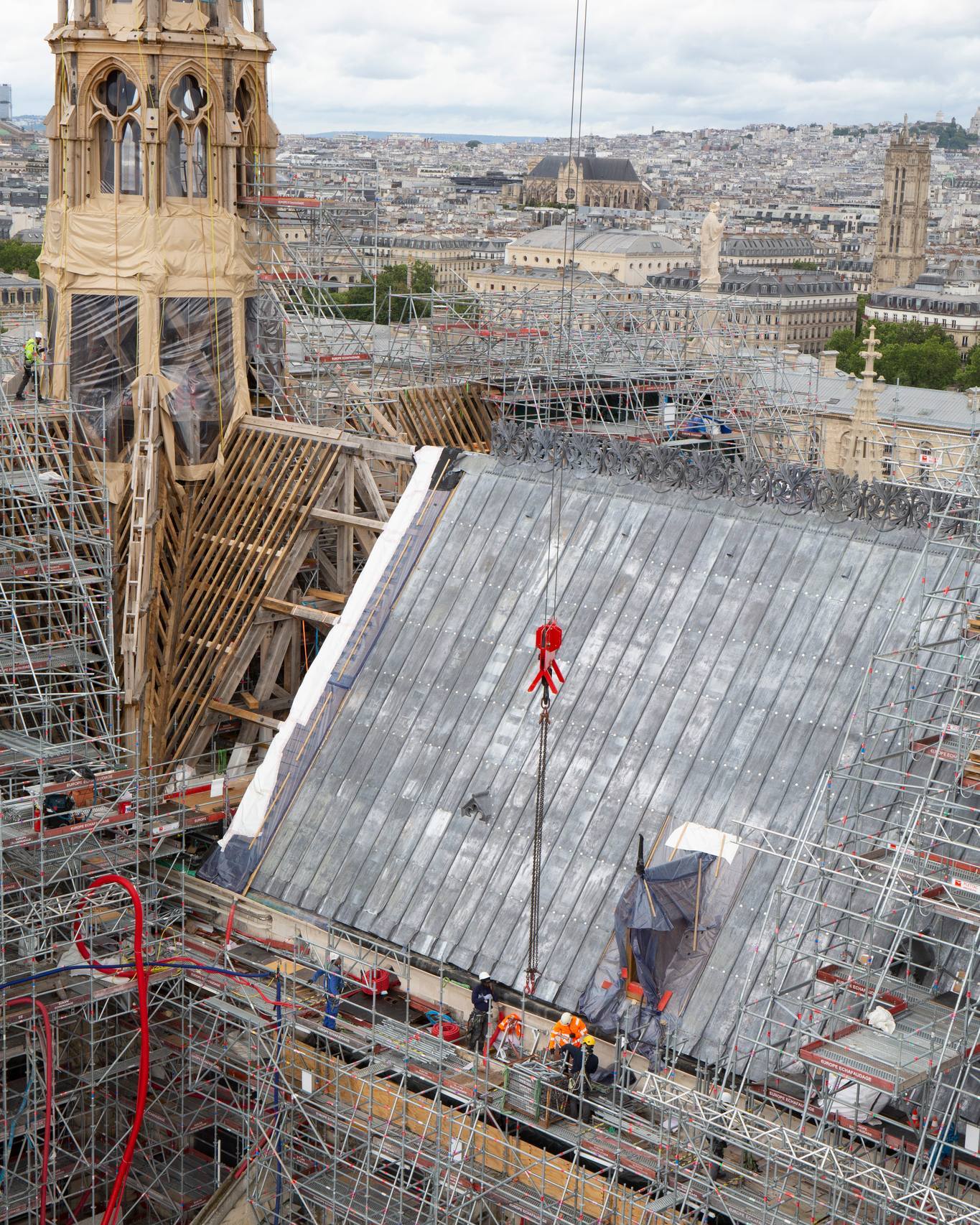
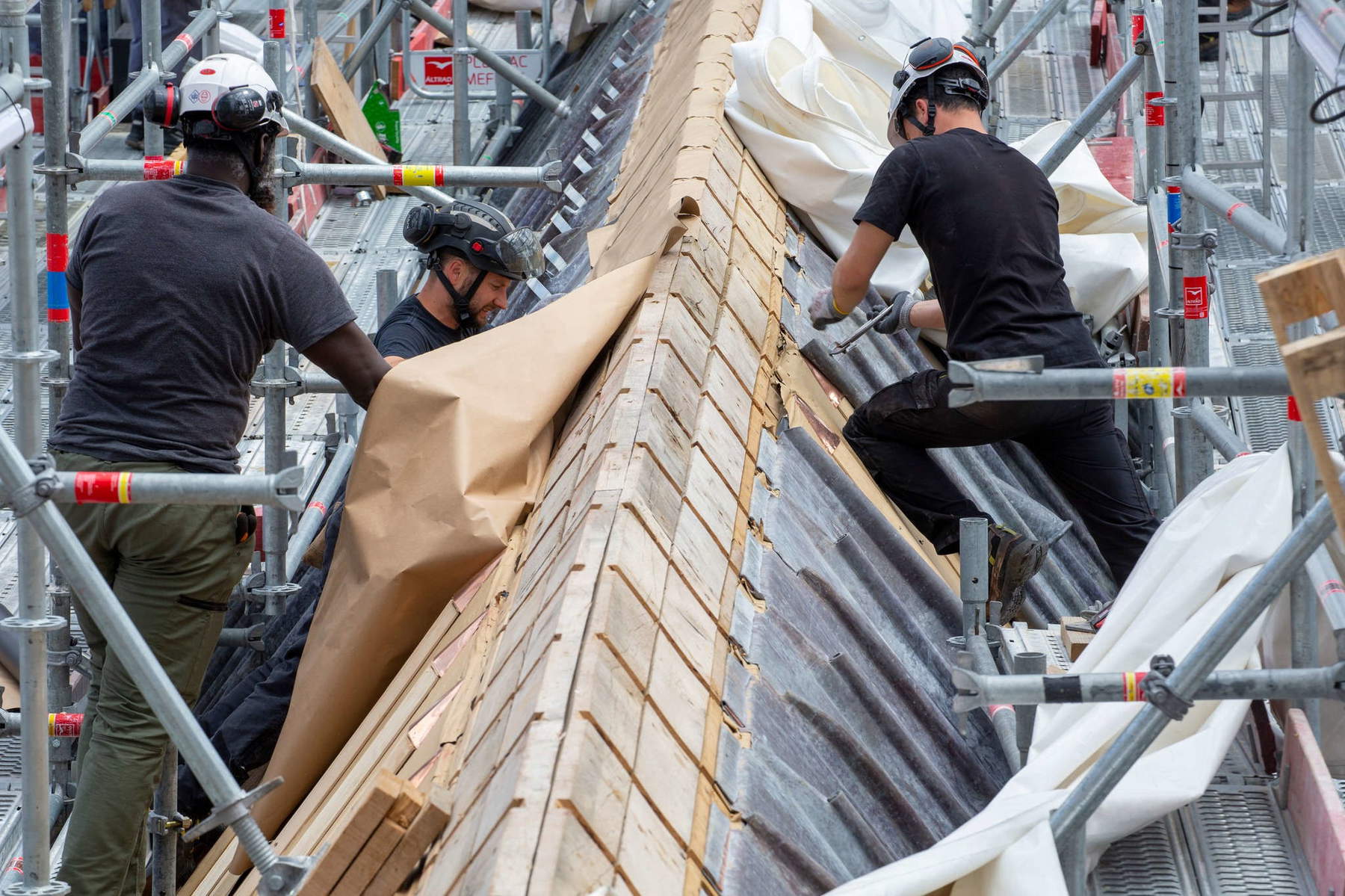
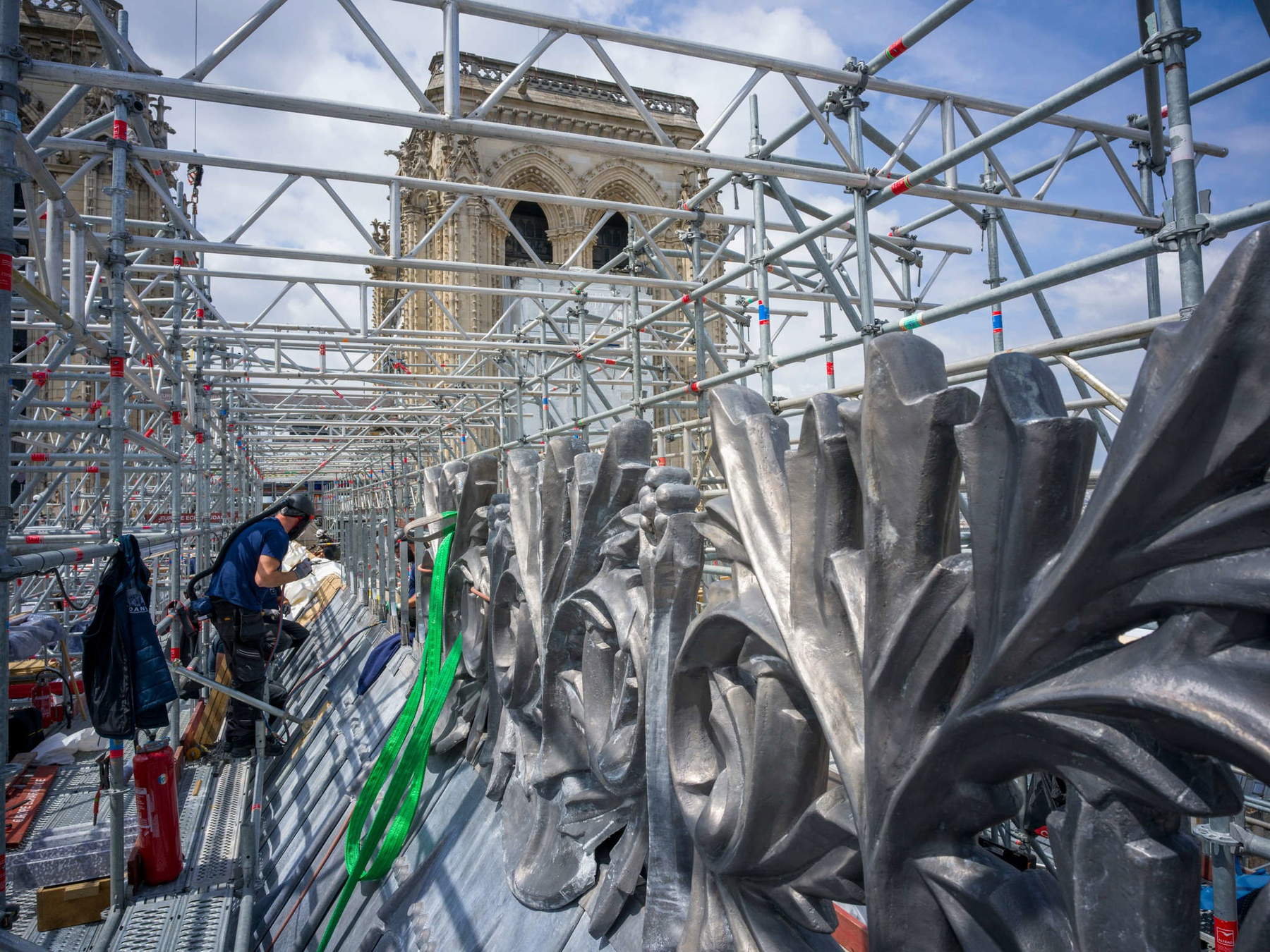
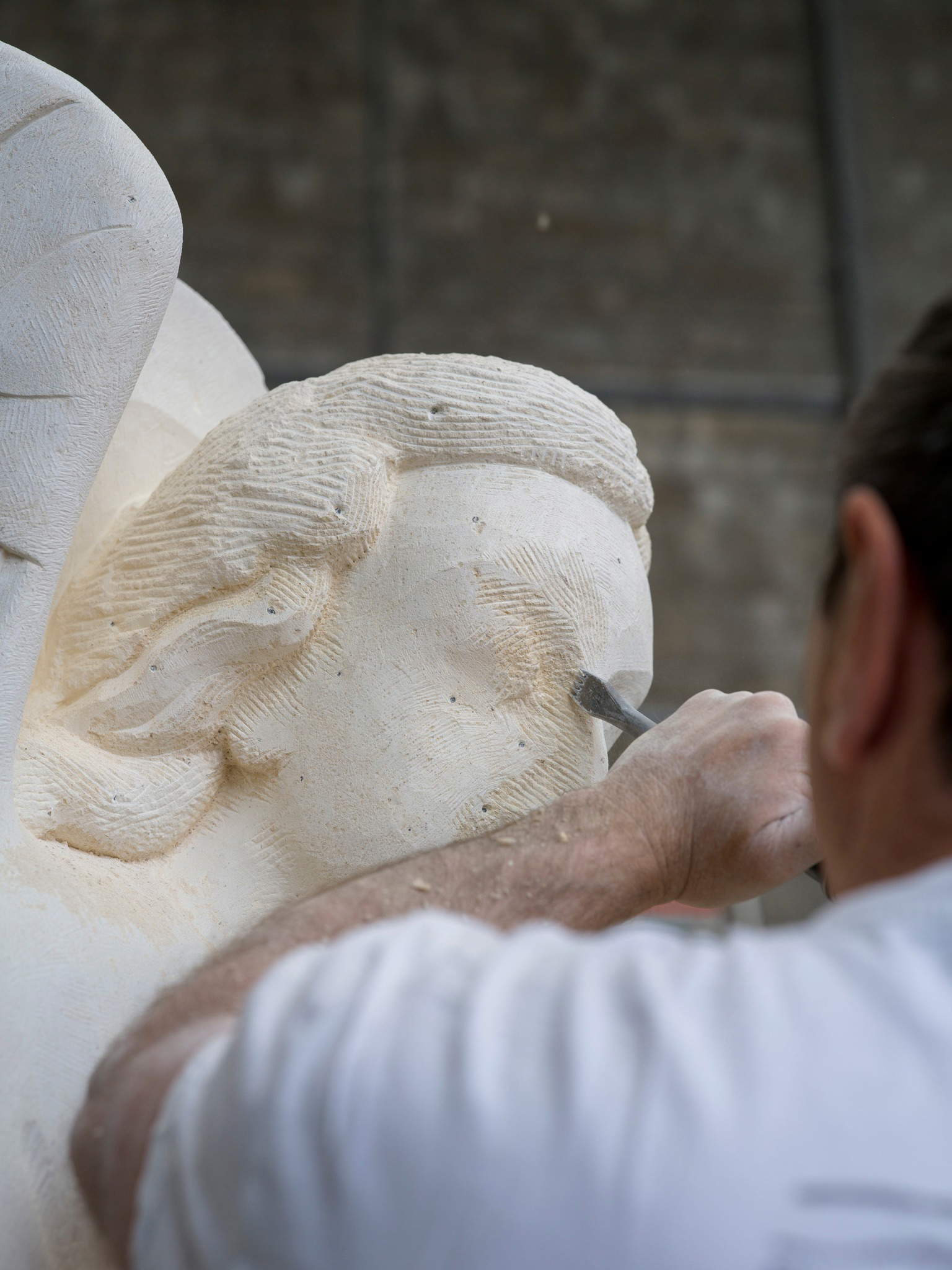
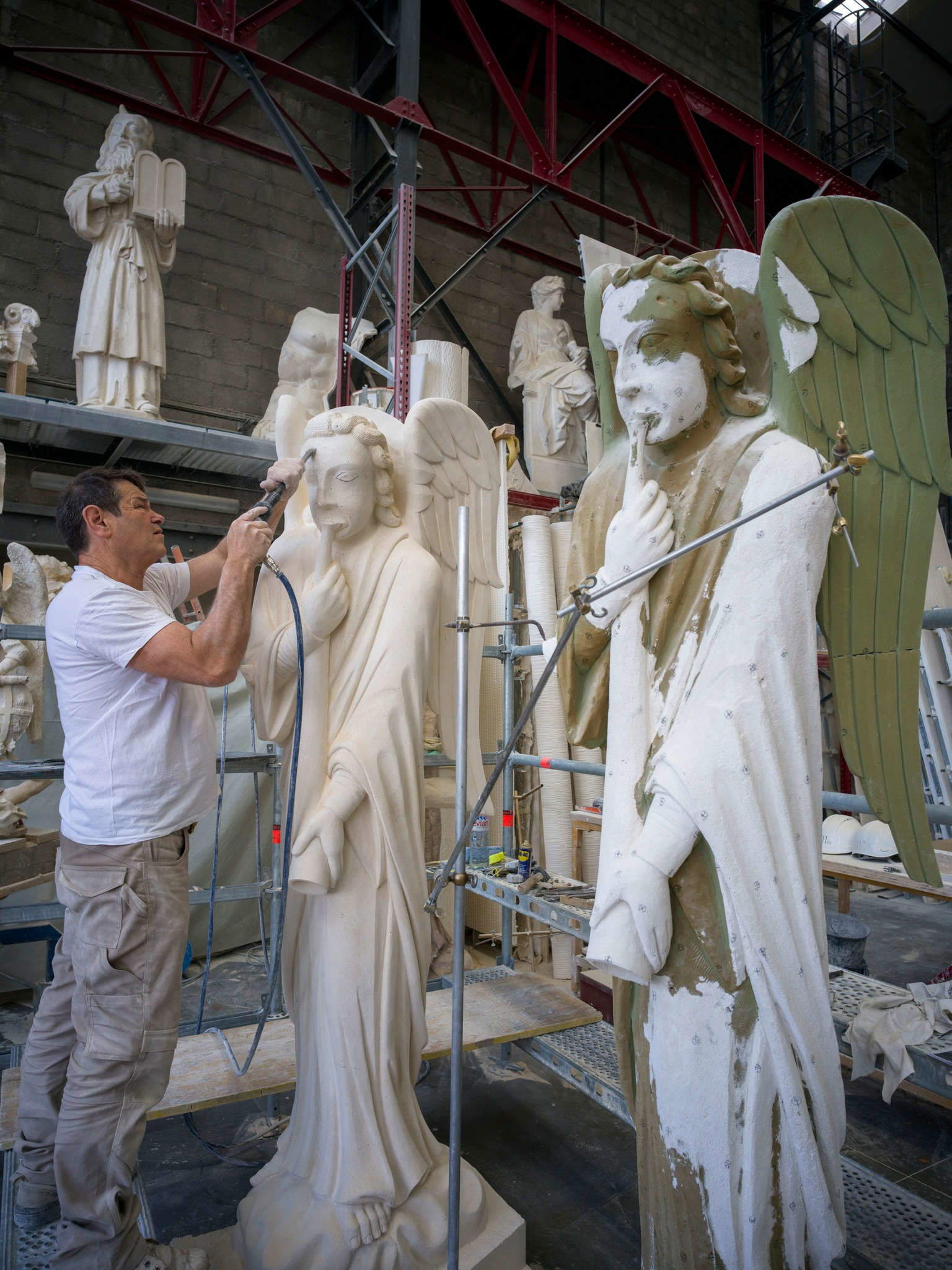
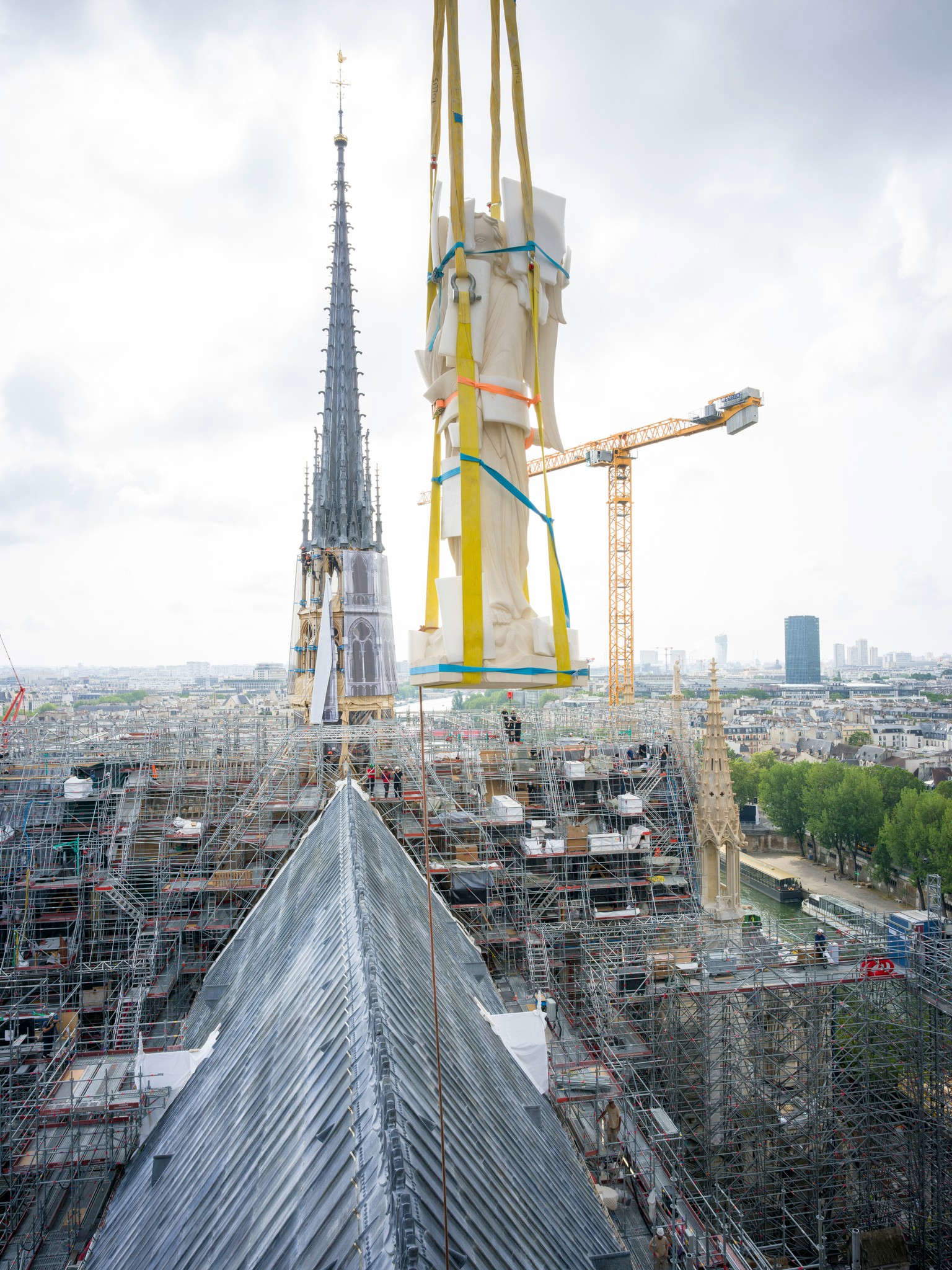
“For Notre-Dame, this is almost a post-war period. The construction site is also similar to those experienced after the great cathedral fires of the 19th century, for example in Rouen in 1822 or Chartres in 1836. With the difference that in Notre-Dame de Paris the vaults gave way, while in Chartres and Rouen the vaults held, so in these two cases it was mainly structural interventions.” This is the reflection of Mathieu Lours, historian of religious architecture(author of the book “La Grâce des Cathédrales - Une esthétique du sacré, published by Place des Victoires”) made to Vatican News commenting on the reconstruction work. “We are,” he continued, “in a century of heritage conservation, which means that we want to recover not only Notre-Dame as it was before, but also the authenticity of the materials, authenticity in the sense of conformity to the previous state. In the past we have not done that. For example, when the Reims Cathedral was rebuilt after World War I, the structure was made of reinforced concrete. When we rebuilt the structure of Nantes Cathedral in 1972 after the fire, we rebuilt it with walls made from concrete. This time the choice was made not only for aesthetic reasons, but also to ensure the consistency of the material structure. We are really in the soul of the 21st century. A century that seeks continuity with history, to inherit and progress from the point of view of historical monuments, toward the most faithful rendering possible.”
Mathieu Lours goes on to speak of the reconstruction as a “paradoxical metamorphosis, because for the first time in its history, Notre-Dame de Paris is undergoing a metamorphosis to become identical to what it was. Notre-Dame has undergone several transformations throughout its history, but each time the goal has been to be different, to be in line with the style of its era. This time, it is being changed to conform to its last known state,” that of Viollet-le-Duc, the architect behind the 19th-century restorations.
Theinterior, on the other hand, “will undergo a metamorphosis similar to that of past centuries with the new liturgical arrangement. The design is by Guillaume Bardet, commissioned by the archbishop and approved by the National Commission of Architecture and Heritage. It is the moment when the cathedral reaffirms its soul as a building dedicated to Catholic worship.” Regarding the ’re-design’ of the interiors, the diocese detailed with a press conference held on June 25 the project for the redevelopment: the 1,500 perforated oak chairs and sacred furnishings are ready.
The project saw the production of the liturgical furniture, chairs and the reliquary of the Holy Crown of Thorns by, respectively, Guillaume Bardet, Ionna Vautrin and Sylvain Dubuisson. The other projects monitored by the diocese (lighting, sound, redevelopment of the treasury, interior fittings) are also proceeding according to schedule, and in addition, Guillaume Bardet has been commissioned to design liturgical vessels and objects that will be used as soon as it reopens, including, among others, ciborium, chalice, monstrance, incense burner, basins, pitchers, cruets, and tray. In addition to the 1,500 chairs (made by a 17-employee craft firm, Bosc-Siège Bastiat) planned, benches, kneelers and prie-dieus, designed by Ionna Vautrin, will also be made.
Designer Vincent Dupont-Rougier was commissioned to design the supports with devotional night lights and spacing devices. The diocese chose Jean-Charles de Castelbajac to make the liturgical vestments for the reopening." The installation of the liturgical furnishings is scheduled for November, and in addition, as Monsignor Olivier Ribadeau Dumas, rector and archpriest of the cathedral since 2022, explained in an interview with L’Osservatore Romano, “the interior of the church has regained an extraordinary appearance after the cleaning of the stones and stained glass windows and the restoration of the paintings. We rediscover the dimensions that were no longer perceived in the past: the sense of elevation of the Gothic cathedral but also the width of the building. The chapels, which were now all black, are highlighted, the stone used gives a warm atmosphere.” And it is precisely on the chapels that he dwells, saying that their “redevelopment is fundamental in order to allow visitors to understand the coherence of our proposal, which consists of the itinerary I mentioned earlier: starting from the north side of the cathedral, which speaks of the birth and public life of Jesus, to the south side, along the Seine, which tells of the resurrection of Christ. Between these two spaces, symbolizing the intermediate stage represented by the Passion of Christ, we will install a monumental reliquary containing the crown of thorns.”
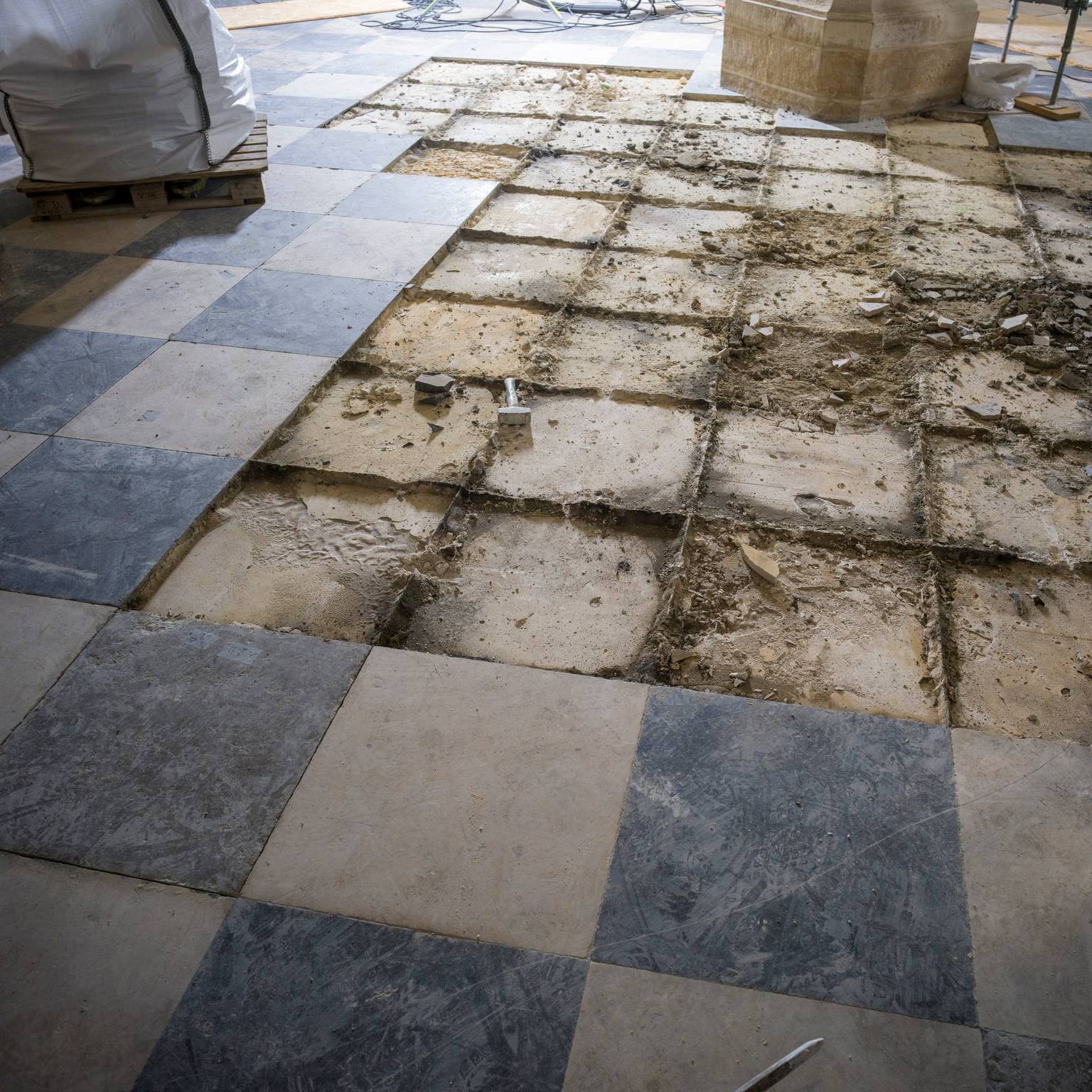
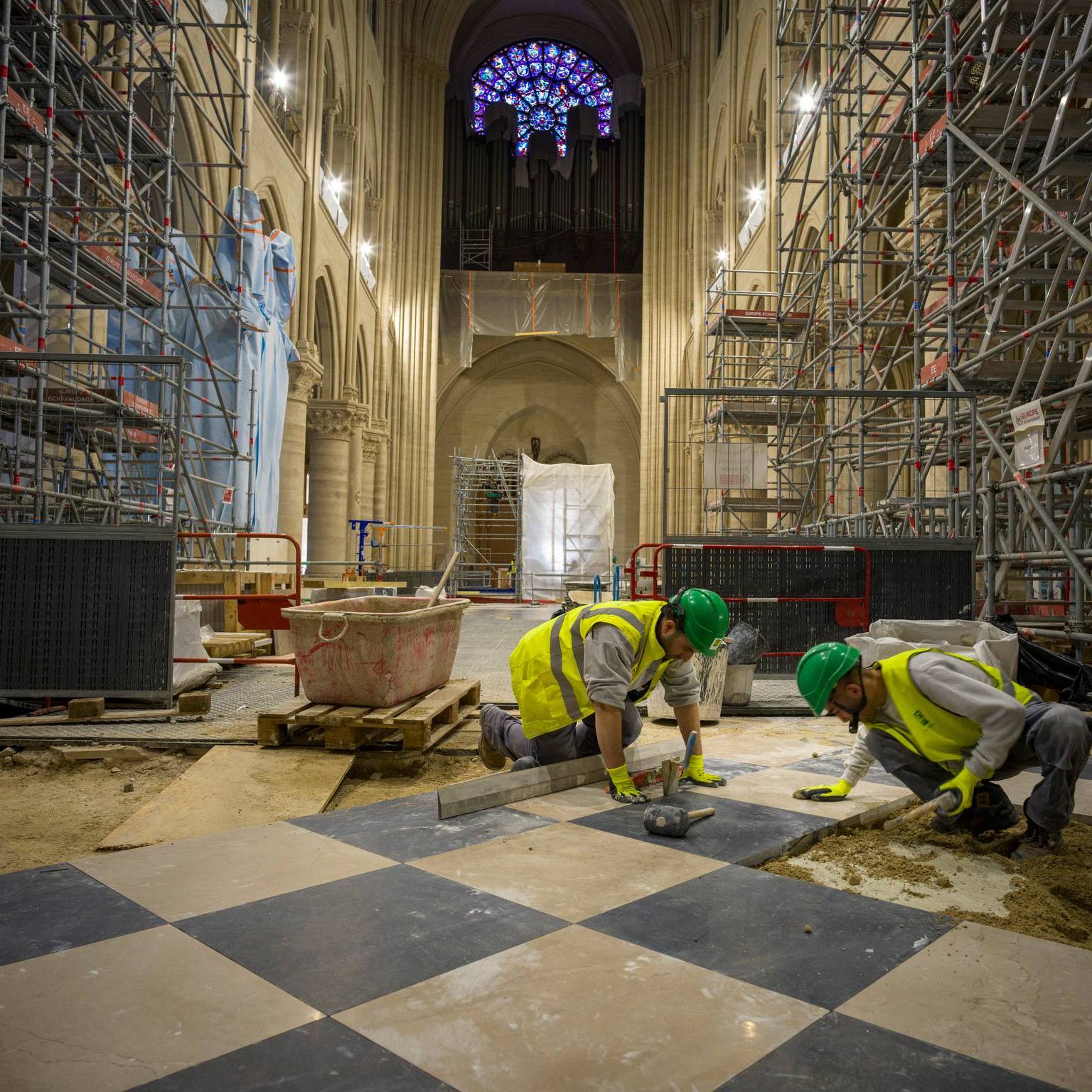
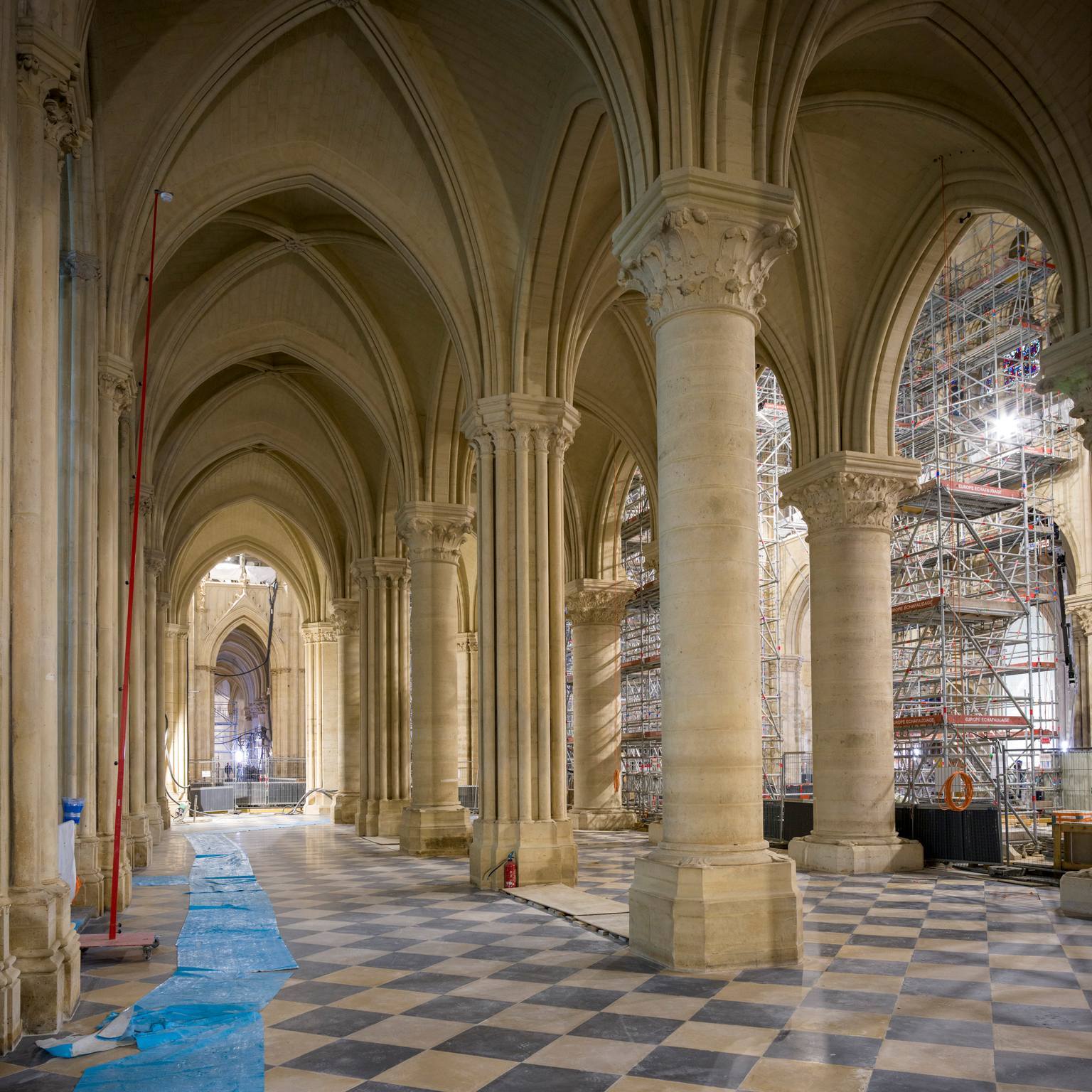
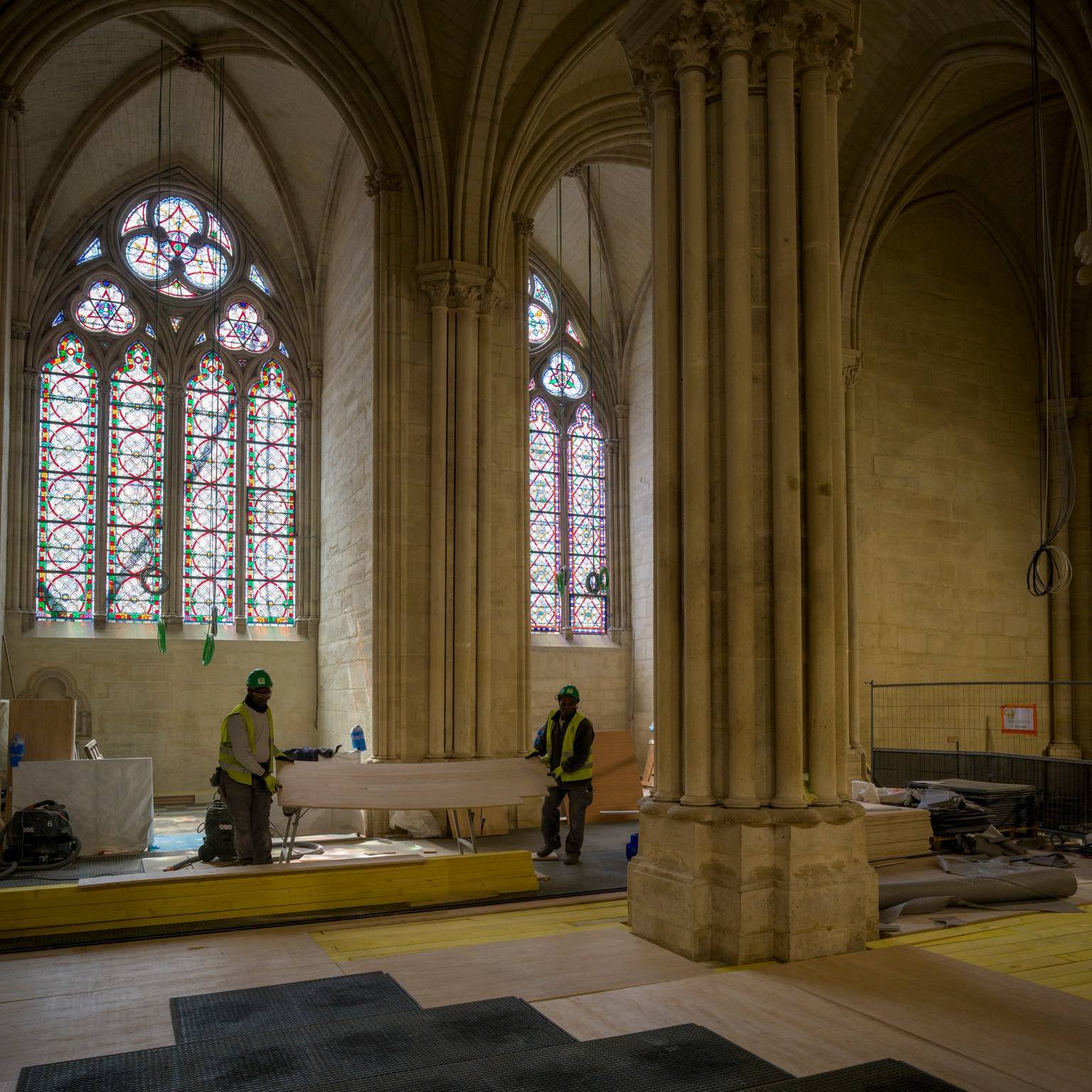
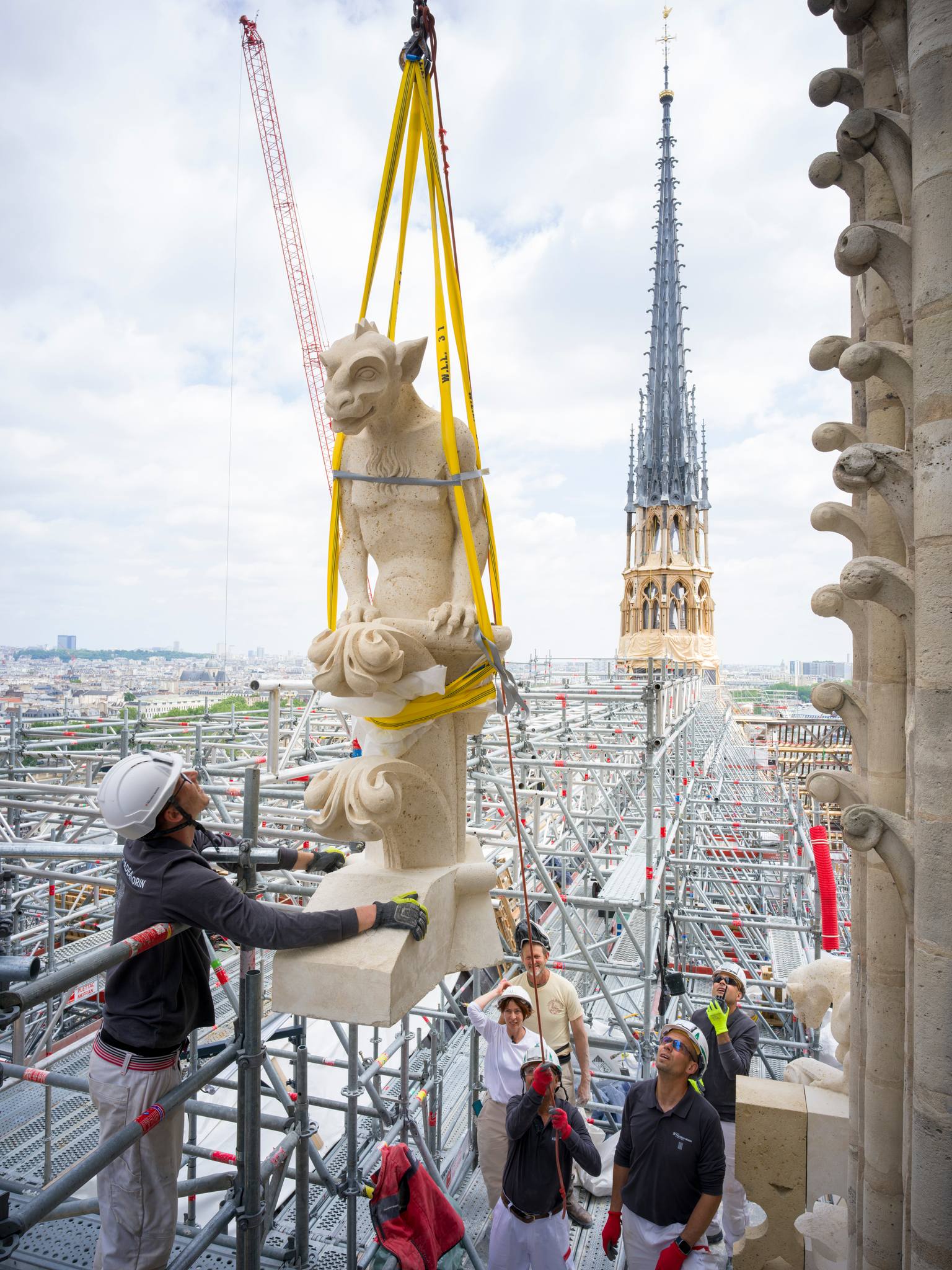
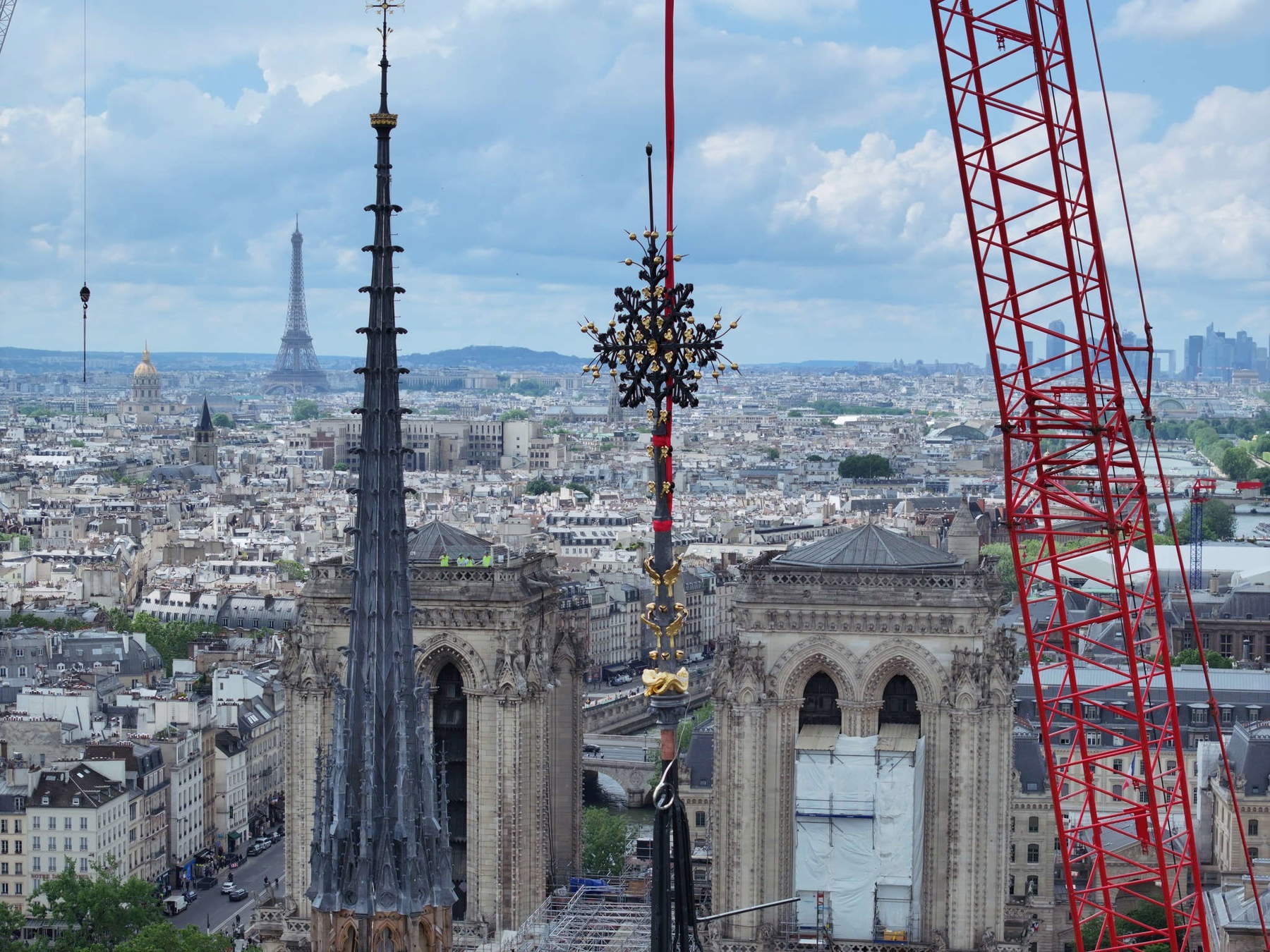
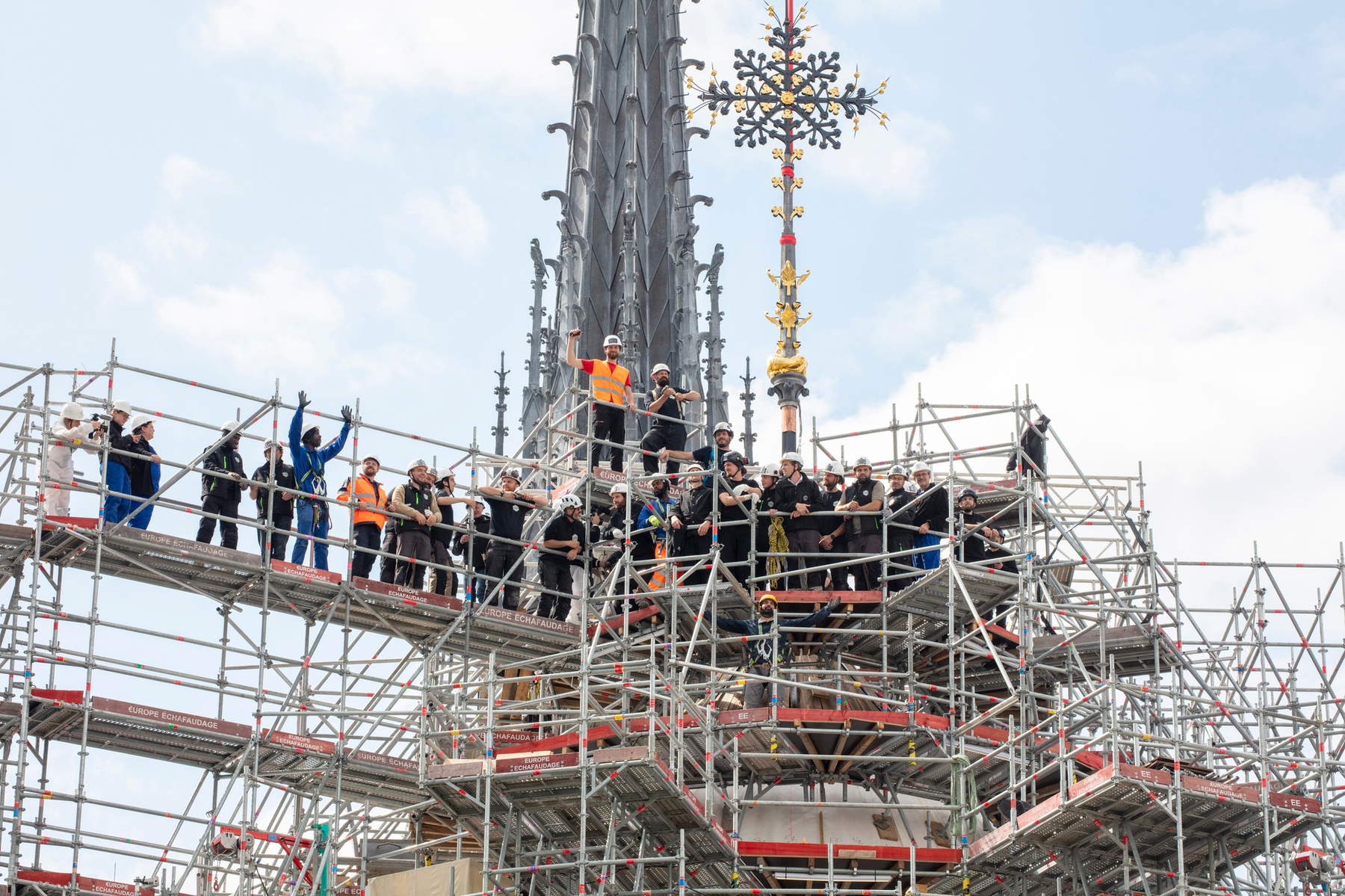
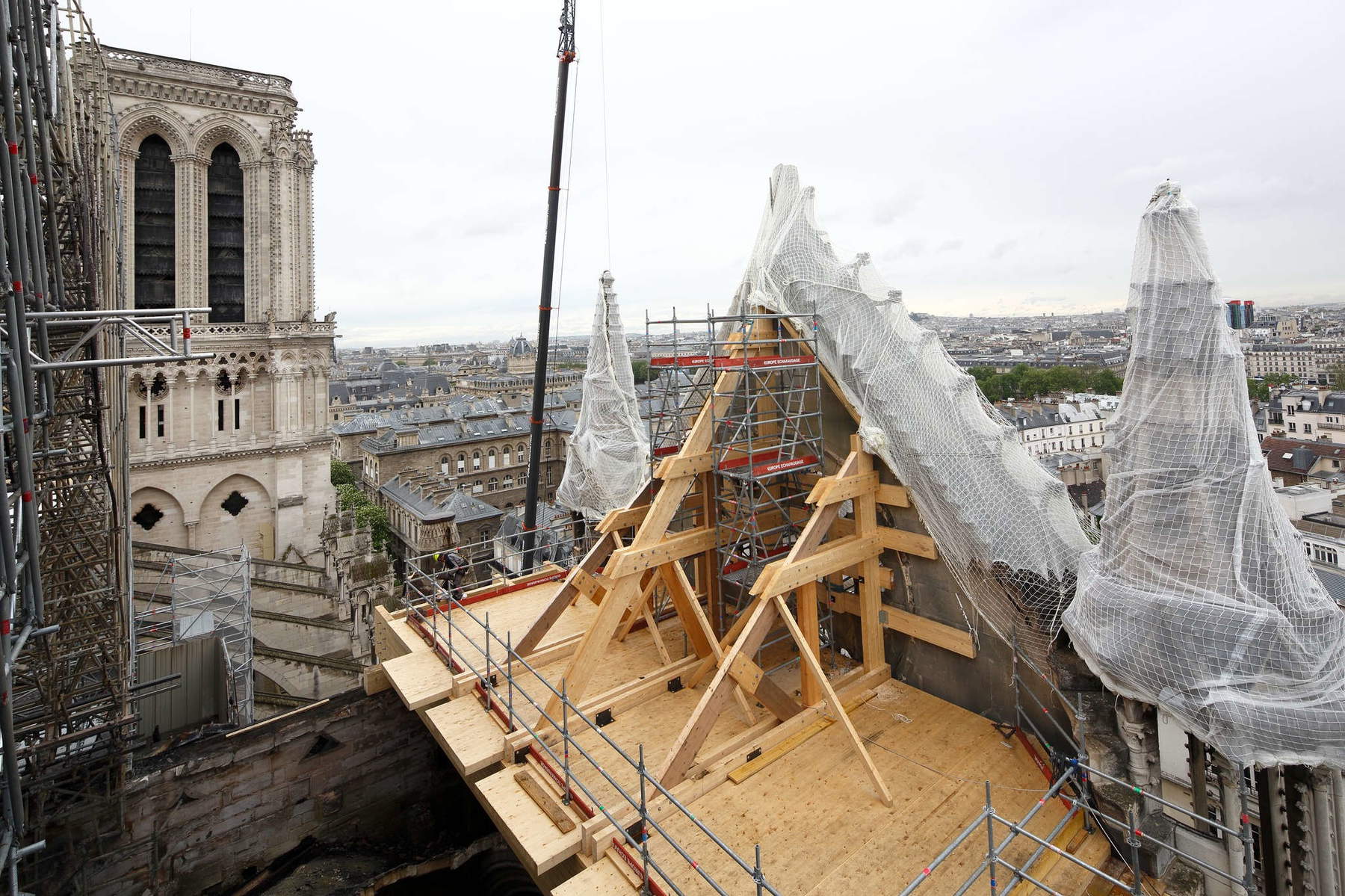
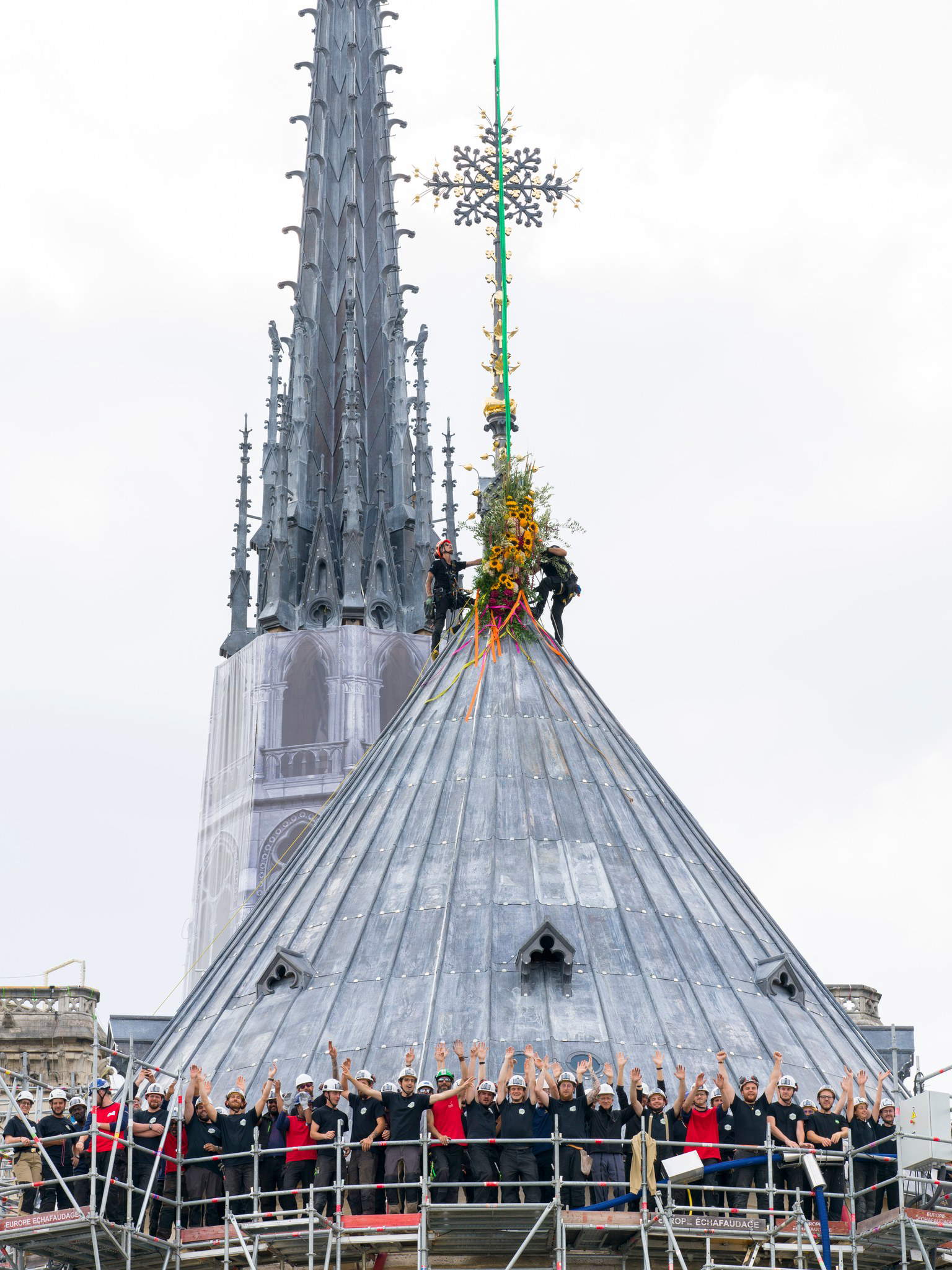
As for the reopening ceremony, however, Monsignor Laurent Ulrich, archbishop of the French capital, talks about it in a pastoral letter published Feb. 2. A week of solemn celebrations and a large popular procession through the streets of Paris will accompany the return of the statue of the Virgin and Child, a six-foot sculptural masterpiece from the 14th century that also escaped the flames and has been kept until now in the church of Saint-Germain-l’Auxerrois, opposite the Louvre building.
The actual reopening will be introduced by a triduum ofcelebrations beginning on December 7, 2024, which will include the handover of Notre-Dame from the state that owns it to the assignee which is the Catholic Church, the rekindling of the organ, a liturgical celebration with a blessing, a Magnificat or a Te Deum, and finally Vespers. The consecration of the altar will take place during the first Mass in the restored cathedral on Dec. 8, the second Sunday of Advent this year, to be followed by the celebration of the Immaculate Conception the next day.
The past five years have been punctuated by the significant strides that were advancing in fits and starts to meet the deadline, despite the Covid and the unforeseen contingencies for such a work (including the death of general site manager Jean-Louis Georgelin). Exactly one year ago, on the other hand, the new roof frame was hoisted in a spectacular operation, after being transported on the Seine by barge. The three structures, which make up the roof framework around the spire and transept arm (pieces weighing 7 tons), were made and assembled in specialized workshops in Ivry-sur-Seine, just outside Paris. The craftsmen responsible for the work used medieval techniques to ensure that the beams were restored to their original state while making use of modern knowledge for all possible improvements.
The first of the three pieces, was hoisted by crane to the top of the cathedral, where it found its final resting place along with the other frames during the summer months of last year. The approximately one hundred reconstructed wooden trusses under the roof, nave, and cor, have been in place since September 2023.
In December 2023 the reconstruction of the spire, ,emtre several particularly important milestones have been achieved since the beginning of 2024 with the completion of the reconstruction of the roof and placement of the Viollet-le-Duc spire in February. Its silhouette has resumed its shape in the Paris sky from its 96-meter height (the Coq, the rooster symbolic of France since the time of the Gauls is identical to that of Viollet-le-Duc but created by the chief architect of France’s historical monuments, Philippe Villeneuve: the original will be placed in a new museum, the “Musée de l’Opéra de Notre-Dame,” to be created on the Île de la Cité, with scaffolding being gradually dismantled). A major achievement for the craftsmen who cut the spire in the workshop and then assembled it piece by piece in the center of the cathedral’s roof. The choir and nave frames, restored in oak according to the medieval design, were crowned with the symbolic bouquet of flowers on January 12 for the choir and March 8 for the nave, marking the completion of the of these works.
The restoration of the three gables (north, south and west) was completed, and the monumental statues of Christ and Saint-Denis, have found their place atop the south and north pediments. Those of Saint-Martin and Saint-Etienne, adorning the south gable, were placed later. The 16 monumental statues of the spire (12 apostles and 4 evangelists), were restored in the Dordogne Department. The painting restorers who cleaned up the 22 monumental paintings (including the Mays, the large canvases offered to Notre-Dame between 1630 and 1707 in May, hence the name) are from Essonne.
During the summer of 2023 the carved oak decorations characteristic of the spire were transported and assembled, for each of the eight sides there are 200 hooks and floral motifs, 16 pinnacles, 32 eaves, 16 span arches, and 8 quadrilobes, all decorations reminiscent of the medieval style. Last fall, assembly of the central part of the structure was completed, which was followed by work on the two pierced floors.
By September 2024, on the other hand,the installation of the technical nets in the floor will be completed and the last interior restorations will be finished. Cleaning of the walls, pictorial decorations and vaults will take place simultaneously to finish on time the cleaning of an area equivalent to 42 thousand square meters.
After the reopening at the end of 2024 there will still remain work to be completed, already precisely timed, which will take place with the church open. The restoration of the apse and sacristy is expected to be completed in 2025 and the installation of new contemporary stained glass windows, for which a call for bids has been launched and has not yet been awarded, to replace the originals by 2026. Once construction around the cathedral is completed, work will begin on rethinking the surroundings, including the huge churchyard, the rue du Cloître, the riverbanks and the area behind it. The project, entrusted to landscape architect Bas Smets, will be finished by 2027.
Among those who made the reconstruction possible was Peter Henrikson, a Minnesota carpenter who worked for months in one of the main workshops, largely using medieval techniques. Like others of his colleagues, he flew to Paris last January to celebrate the substantial completion of the roof work: “I mean it’s amazing to know that what’s there is exactly the same as what was there before. There was a lot of attention to detail to make sure it looked just like it did before the fire.”
At the beginning of the reconstruction phase there was a debate about how the cathedral should be rebuilt and it was decided to redo it as it was before the fire, there were those who asked (President Macron) to consider including a contemporary sign but then the line of faithful reconstruction prevailed. However, Macron announced last December that a competition for contemporary artists would be held aimed at creating a work of art for Notre Dame, so that “our century would find its place among the many others among the cathedral’s works.”
Warning: the translation into English of the original Italian article was created using automatic tools. We undertake to review all articles, but we do not guarantee the total absence of inaccuracies in the translation due to the program. You can find the original by clicking on the ITA button. If you find any mistake,please contact us.